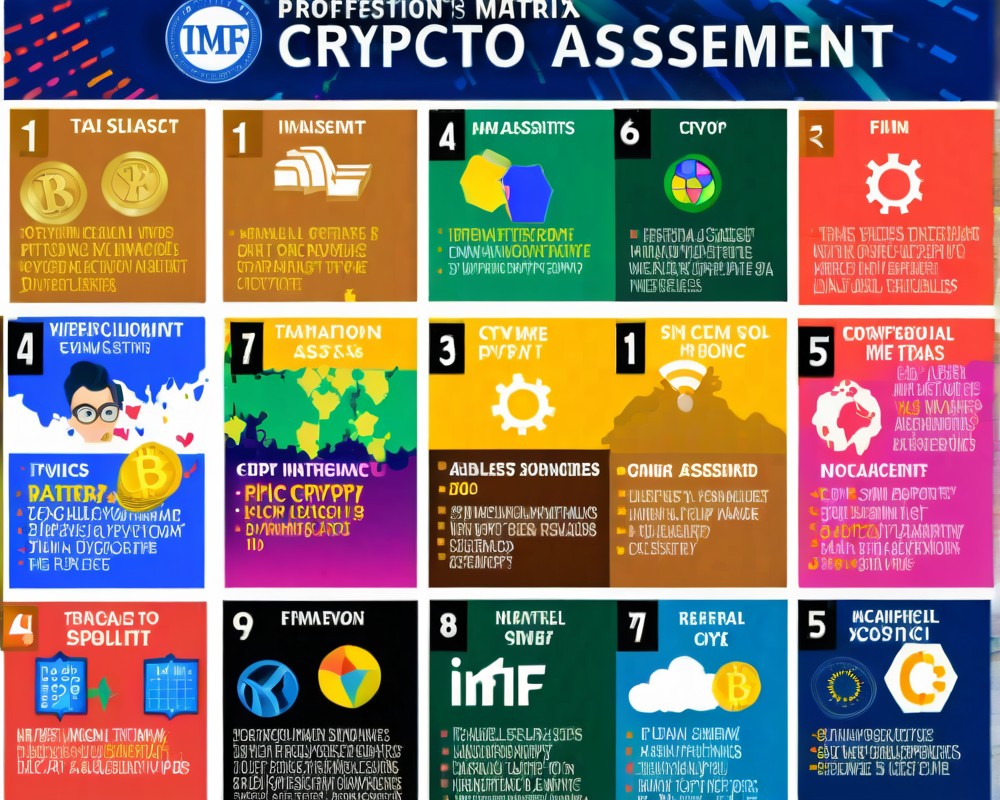Introduction to the IMF’s Proposal
On September 29, the International Monetary Fund (IMF) dropped a bombshell in the world of finance with a working paper titled “Assessing Macrofinancial Risks from Crypto Assets.” Authors Burcu Hacibedel and Hector Perez-Saiz introduced a new tool called the crypto-risk assessment matrix (C-RAM). This snazzy matrix aims to help countries pinpoint vulnerabilities and formulate possible policy responses to the ever-expanding crypto sector.
Decoding the Crypto-Risk Assessment Matrix (C-RAM)
The C-RAM is not just any matrix; it includes a nifty three-step approach designed to make assessing crypto risks as breezy as a Sunday drive. Here’s a breakdown of the steps:
- Step 1: Assess macro-criticality using a decision tree that gauges how much crypto can rock the macro-economy.
- Step 2: Check indicators akin to those used in monitoring traditional financial systems—because, hey, what’s good for the goose is good for the gander.
- Step 3: Analyze global macro-financial risks to determine systemic risk levels.
Crypto Risks in Action: El Salvador Case Study
The authors of the IMF paper didn’t just keep their theory in an ivory tower. They applied C-RAM to evaluate crypto risks in El Salvador, a nation that boldly made Bitcoin (BTC) a legal tender in September 2021. Spoiler alert: It’s not looking good:
“The use of crypto assets in El Salvador could also be assessed as macrocritical as recent regulatory and legal changes entail the risk of substantial cryptoization in the country, undermining financial stability and affecting large remittances and other capital inflows.”
IMF’s Historical Stance on Bitcoin
In a plot twist that not even Hollywood could write, the IMF has consistently warned El Salvador against going full crypto. Back in January 2022, the organization urged the Central American country to drop Bitcoin as legal tender, citing concerns about financial stability, integrity, and consumer protection. It’s like telling your friend not to date that one chaotic person, only for them to double down.
A Regulatory Race Against Time
As the crypto landscape shifts faster than a teenager’s taste in music, regulators are scrambling to keep pace. On September 7, the IMF, in cahoots with the Financial Stability Board, released a joint paper filled with recommendations tailored to mitigate risks arising from crypto activities. This collaboration was inspired by a request from the Indian G20 presidency, showcasing that even the big boys understand the urgency.
Conclusion: What Lies Ahead for Crypto Regulators
As we stand on the brink of what could be a financial revolution—or disaster—how regulators respond will determine the future of crypto. What’s certain? The crypto train has left the station, and regulators better have their ticket ready to catch up!















+ There are no comments
Add yours